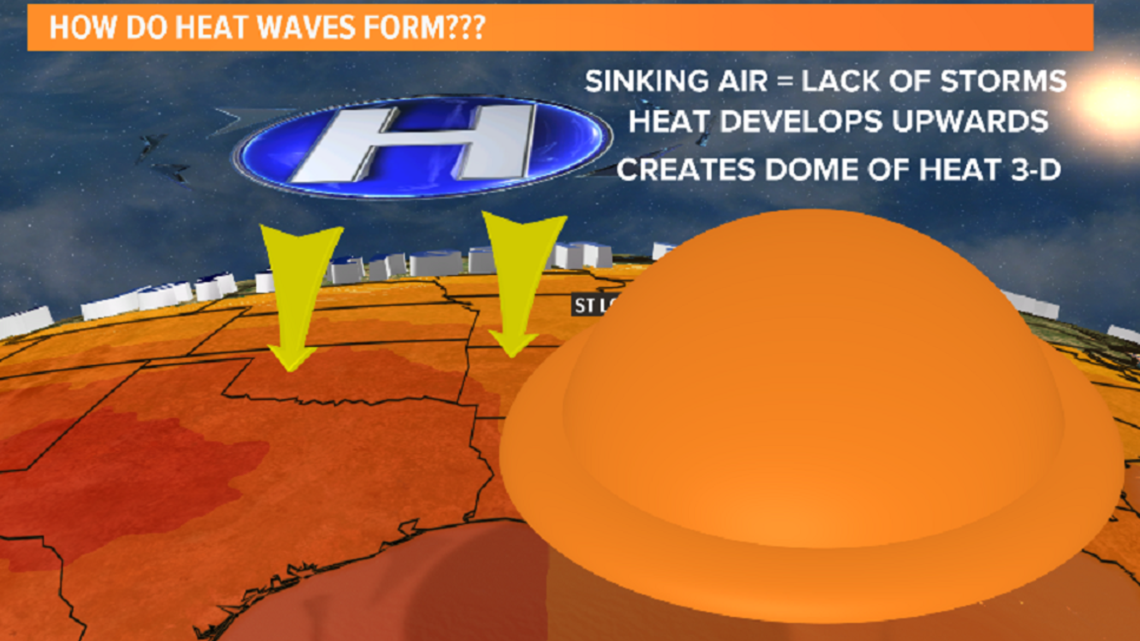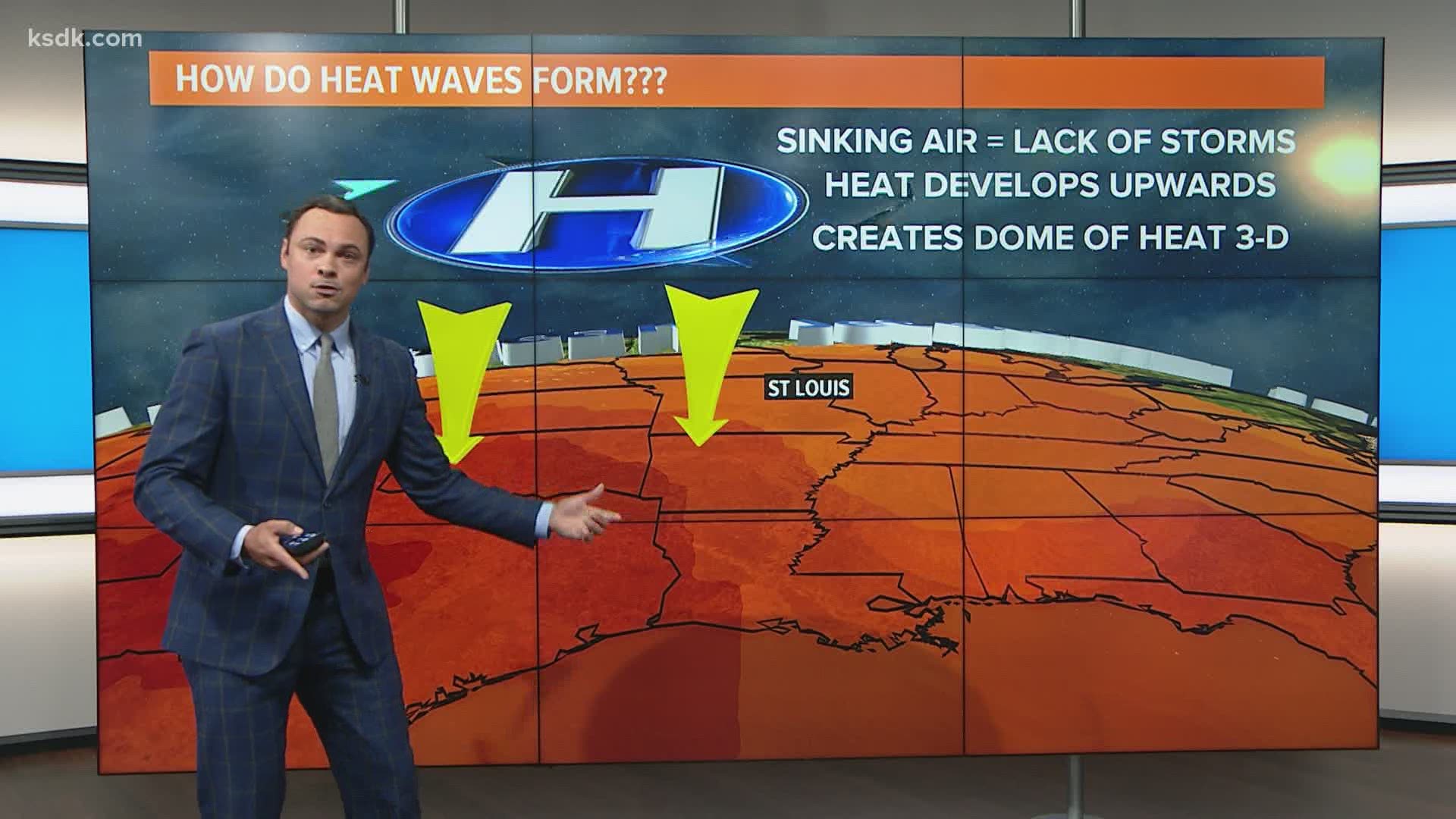ST. LOUIS — The St. Louis area is ramping up to a heat wave this week. High temperatures will range from the low to upper 90s and the heat index — at times — will reach 105 and maybe even 110 degrees by Friday, through the weekend and possibly into early next week.
With the heat unavoidable for the next several days, a lot of residents in the Bi-state area might be wondering how heat waves form to begin with.
How do heat waves form?
- First, the jet stream must be positioned across northern states/Canada border or even farther north.
- This allows high pressure to develop, thus creating sunny, dry weather.
- As the high pressure stays over a certain area, it strengthens and the pressure (measured in millibars) gets higher and higher.
- Thus creating air that gets hotter and hotter.
The heat spreads out not only two-dimensionally at the surface, but also three-dimensionally, in the upper levels of our atmosphere.


When you have an area of high pressure over a particular region, that creates sinking air. The air that is usually located in the upper levels of the atmosphere sinks down to the ground and warms. In turn, since warm air wants to rise, it creates a conveyor belt of warm air rising and sinking in the atmosphere.
Eventually, you loose a lot of the colder air that is usually trapped in the upper levels of the atmosphere.
Finally, with the lack of colder air in upper atmosphere over time, that creates the heat wave. In some cases, that can last for up to a month!
In order for heat waves to go away, you must have a stronger area of low pressure to push it along or break down the ridge and that just means rain, clouds and cooler weather.

